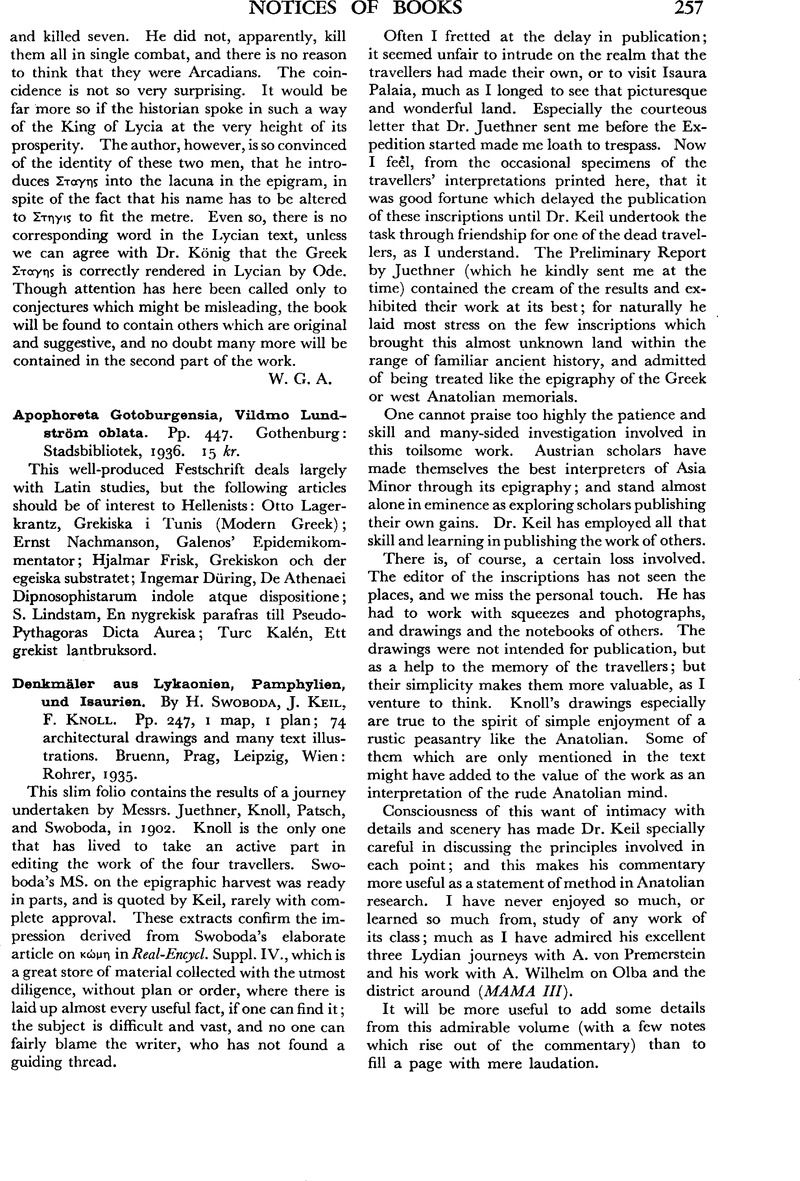No CrossRef data available.
Published online by Cambridge University Press: 18 September 2015

page 258 note 1 Σινηθανδος in Hierocles is perhaps corrupt, but probably comes through transposition (from Σινθι); θ represents τρ.
page 258 note 2 Cases are confused as much as moods in that barbarous text.
page 259 note 1 Mestia in the Table is like the form used by Basil Μηαστια: Misthia is a false grecising name.
page 259 note 2 When colonia Antiochea became a metropolis, the name colonia disappeared. Colonia Parlais and Colonia Archelais kept the name colonia in Byzan-tine times, often without any second name.
page 260 note 1 Hamilton describes the walls and the arch of Hadrian as built of marble, but this is mere loose popular usage; and he describes the hills (from which the stone was quarried, Sterrett, p. 121) as of ‘blue and yellow semi-crystalline limestone.’